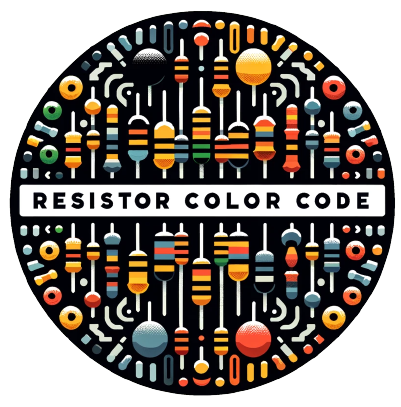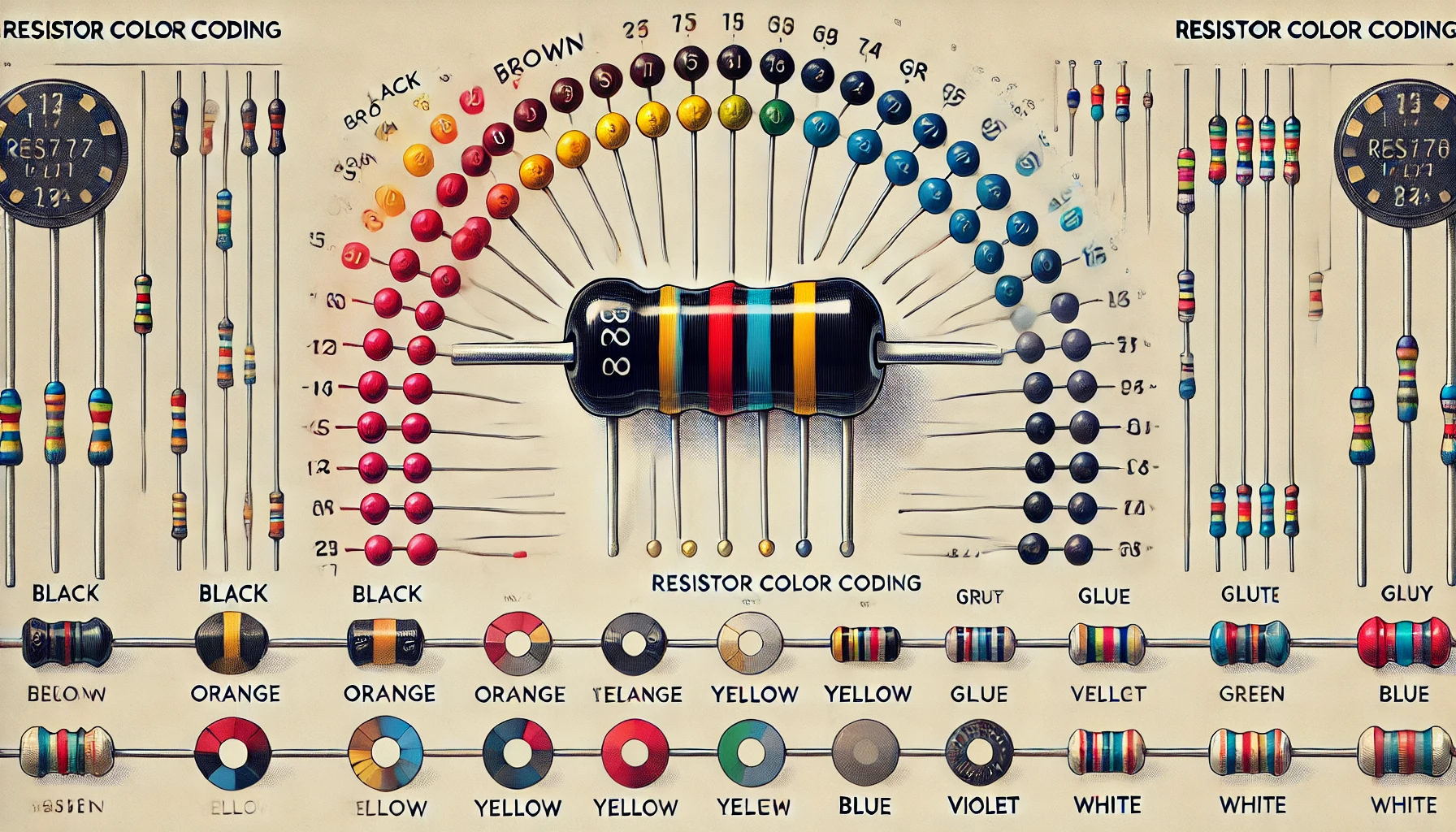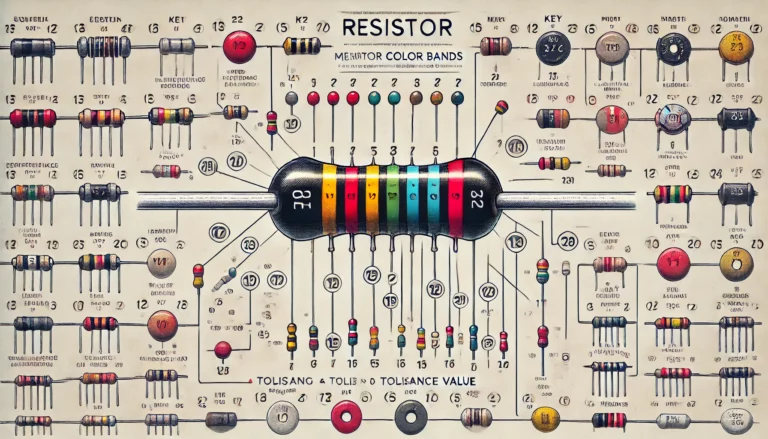How to Understand Resistor Color Coding
Welcome to the fascinating world of electronics, where resistors play a crucial role in controlling the flow of electric current. Whether you’re a beginner or a seasoned enthusiast, understanding resistor color coding is essential for working with electronic circuits. This article will guide you through the process of deciphering resistor color codes, making it easy for you to identify resistor values accurately. So, let’s dive in and make resistor color coding less of a mystery.
What is Resistor Color Coding?
Resistor color coding is a method used to indicate the resistance value of a resistor. This coding system uses colored bands painted on the resistor body to represent its value in ohms (Ω), the tolerance, and sometimes the reliability. The color code is a universal standard, making it easy to identify resistor values without the need for special equipment.
Why is Resistor Color Coding Important?
Understanding resistor color coding is important for several reasons:
- Accurate Identification: It allows for quick and accurate identification of resistor values.
- Efficiency: Speeds up the process of assembling and troubleshooting electronic circuits.
- Standardization: Ensures that resistors are universally recognized, regardless of the manufacturer.
The Basics of Resistor Color Coding
Resistor color codes are typically composed of four, five, or six colored bands. Each color corresponds to a specific number, multiplier, or tolerance value. Here’s a breakdown of the color codes and their meanings:
The Color Code Chart
| Color | Digit | Multiplier | Tolerance |
|---|---|---|---|
| Black | 0 | 1 | – |
| Brown | 1 | 10 | ±1% |
| Red | 2 | 100 | ±2% |
| Orange | 3 | 1,000 | – |
| Yellow | 4 | 10,000 | – |
| Green | 5 | 100,000 | ±0.5% |
| Blue | 6 | 1,000,000 | ±0.25% |
| Violet | 7 | 10,000,000 | ±0.1% |
| Gray | 8 | 100,000,000 | ±0.05% |
| White | 9 | 1,000,000,000 | – |
| Gold | – | 0.1 | ±5% |
| Silver | – | 0.01 | ±10% |
| None | – | – | ±20% |
Understanding the Bands
Four-Band Resistors:
- First Band: Represents the first digit.
- Second Band: Represents the second digit.
- Third Band: Multiplier (the number of zeros to add).
- Fourth Band: Tolerance (accuracy of the resistor’s value).
Example: A resistor with the color bands brown, black, red, and gold has a value of 1,000 ohms with a tolerance of ±5%.
Five-Band Resistors:
- First Band: Represents the first digit.
- Second Band: Represents the second digit.
- Third Band: Represents the third digit.
- Fourth Band: Multiplier.
- Fifth Band: Tolerance.
Example: A resistor with the color bands brown, black, black, red, and brown has a value of 10,000 ohms with a tolerance of ±1%.
Tips for Remembering the Color Codes
Remembering the resistor color code chart can be challenging. Here are some tips to help you:
- Mnemonic Devices: Use mnemonic phrases to remember the order of colors. For example, “Black Brown Red Orange Yellow Green Blue Violet Gray White” can be remembered as “BB ROY of Great Britain has a Very Good Wife”.
- Practice: The more you practice reading and interpreting resistor color codes, the easier it will become.
- Color Code Calculators: Use online resistor color code calculators to verify your readings.
Practical Examples
Let’s apply what we’ve learned with a few practical examples:
Example 1: A resistor with the color bands red, violet, yellow, and gold.
- First Band (Red): 2
- Second Band (Violet): 7
- Third Band (Yellow): 10,000 (multiplier)
- Fourth Band (Gold): ±5% tolerance
So, the value is 270,000 ohms (or 270 kΩ) with a tolerance of ±5%.
Example 2: A resistor with the color bands green, blue, black, and silver.
- First Band (Green): 5
- Second Band (Blue): 6
- Third Band (Black): 1 (multiplier)
- Fourth Band (Silver): ±10% tolerance
So, the value is 56 ohms with a tolerance of ±10%.
Common Mistakes and How to Avoid Them
- Reading Backwards: Ensure you start reading from the correct end, usually the one with the closer bands.
- Mistaking Similar Colors: Colors like red and brown or orange and yellow can look similar under poor lighting. Always double-check under good lighting conditions.
- Ignoring Tolerance: Tolerance is crucial for precision circuits. Make sure to consider it, especially in sensitive applications.
Understanding resistor color coding is essential for anyone involved in electronics, from hobbyists to professionals. By mastering this system, you can quickly identify resistor values, which is crucial for assembling and troubleshooting circuits efficiently. Keywords like resistor values, color codes, and electronic components are important for searching relevant information online. Whether you’re looking to decode resistor colors or improve your electronics skills, this knowledge is indispensable.
Advanced Tips for Mastery
For those looking to deepen their understanding of resistor color coding, consider the following advanced tips:
- Experiment with Real Components: Handling actual resistors will help reinforce your learning.
- Work on Projects: Incorporate resistors into simple projects to see how different values affect circuit behavior.
- Use Simulation Software: Programs like SPICE can simulate circuits with resistors, helping you visualize their impact.
Conclusion
By now, you should have a clear understanding of how to read resistor color codes. This knowledge is fundamental for anyone working with electronics, ensuring you can quickly and accurately identify resistor values. Remember to practice regularly, use mnemonic devices, and verify your readings with online tools. With these tips, you’ll become proficient in resistor color coding in no time.
If you have any questions or need further clarification, feel free to reach out. Happy tinkering!






